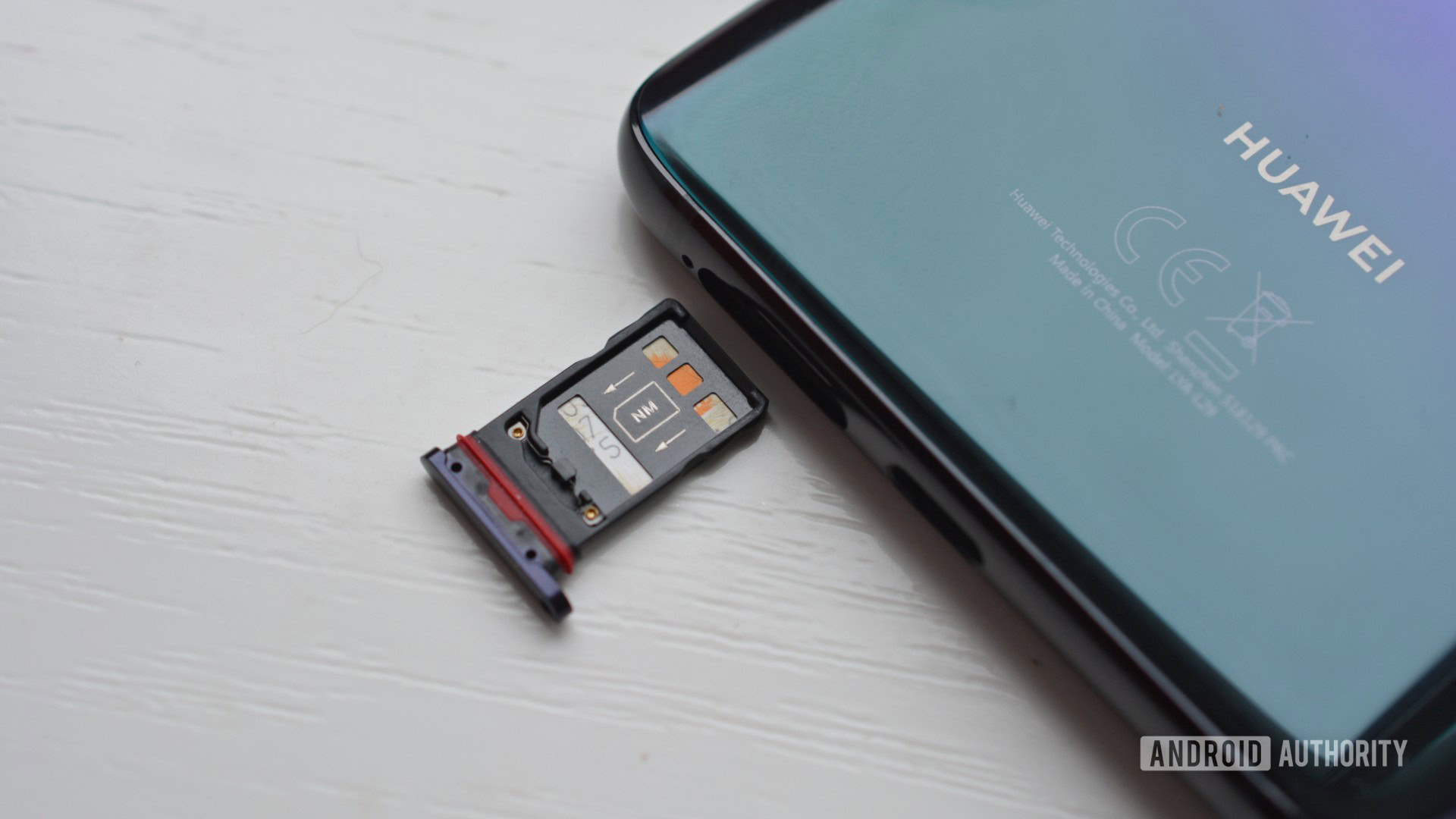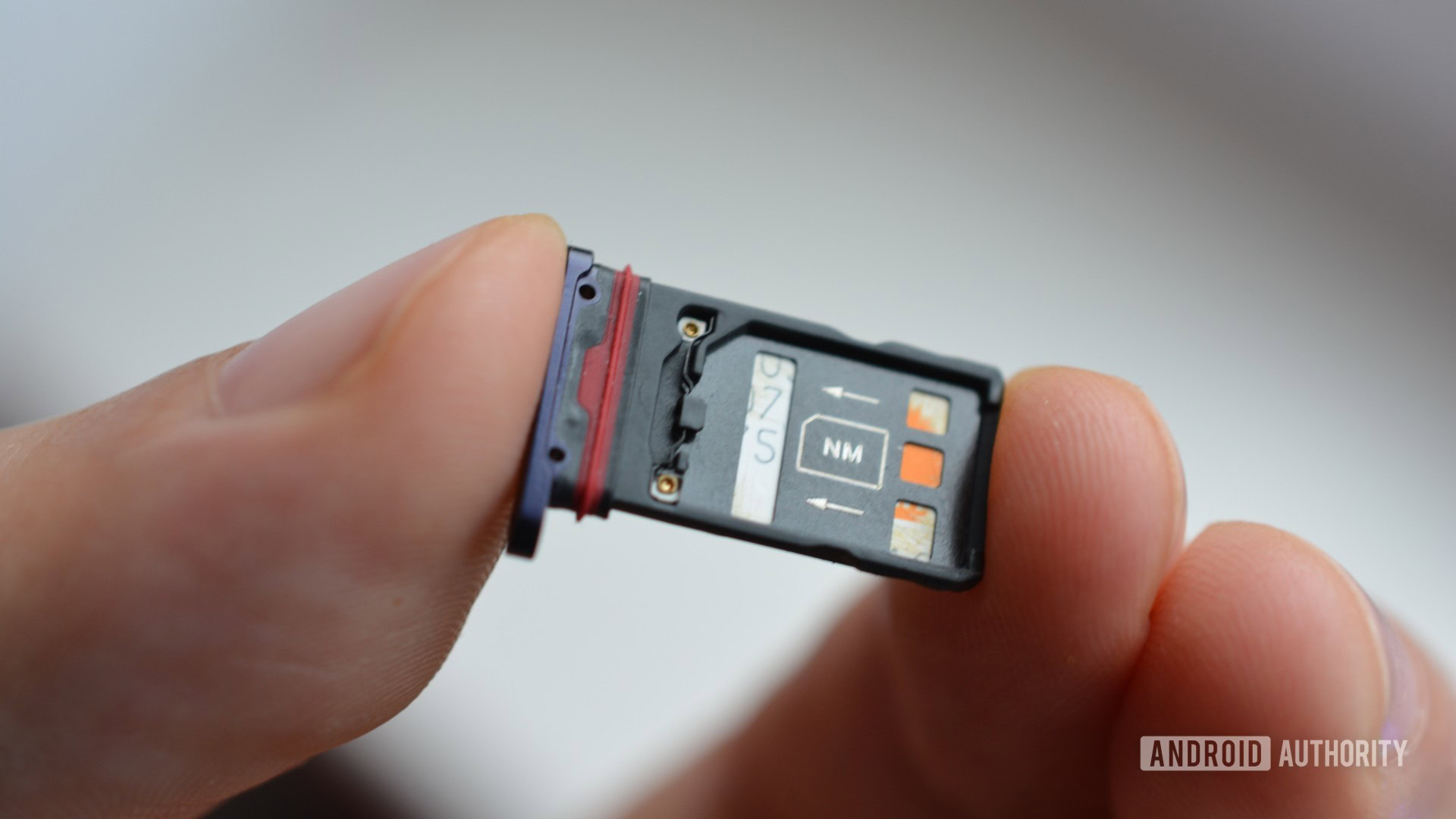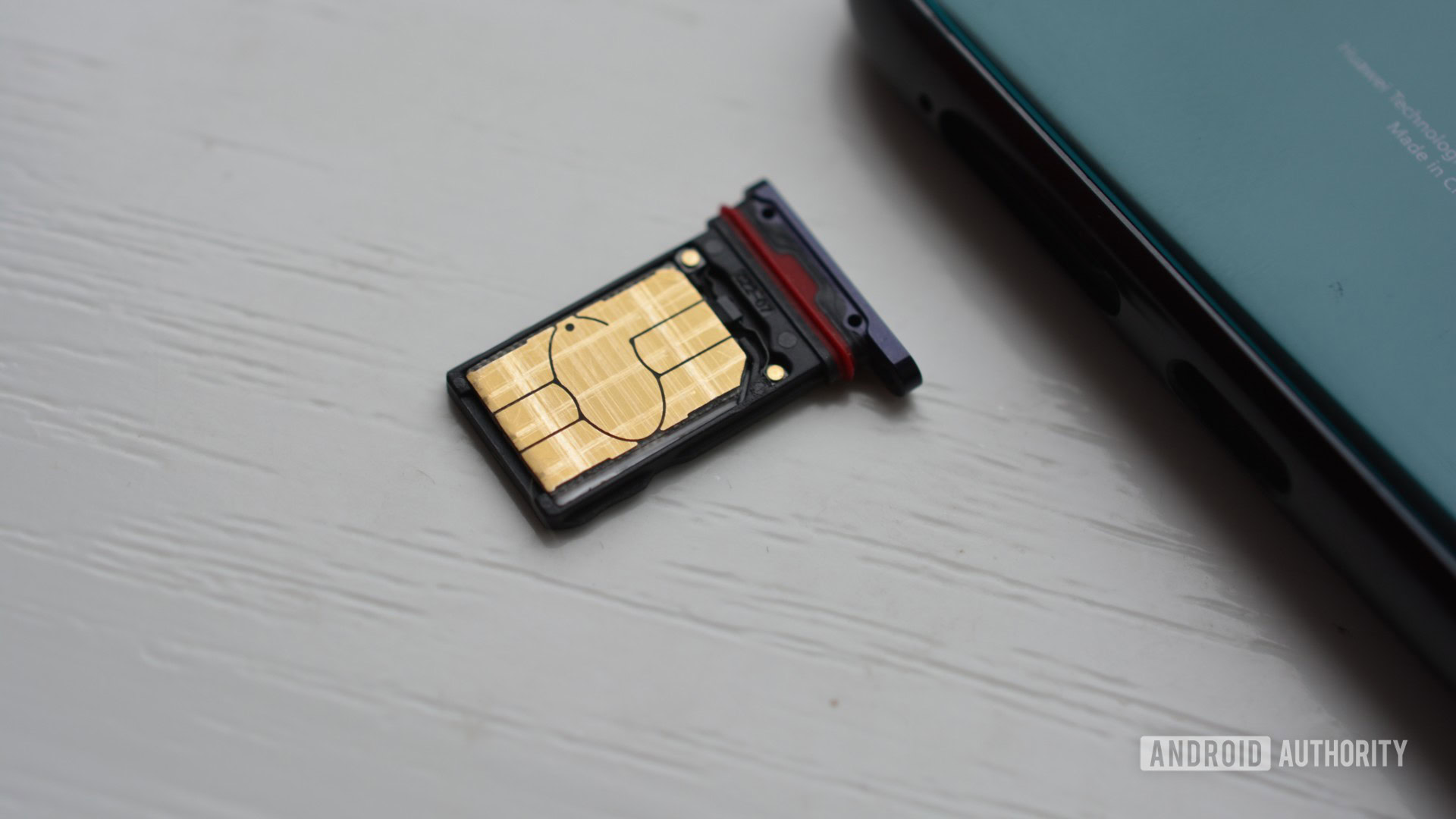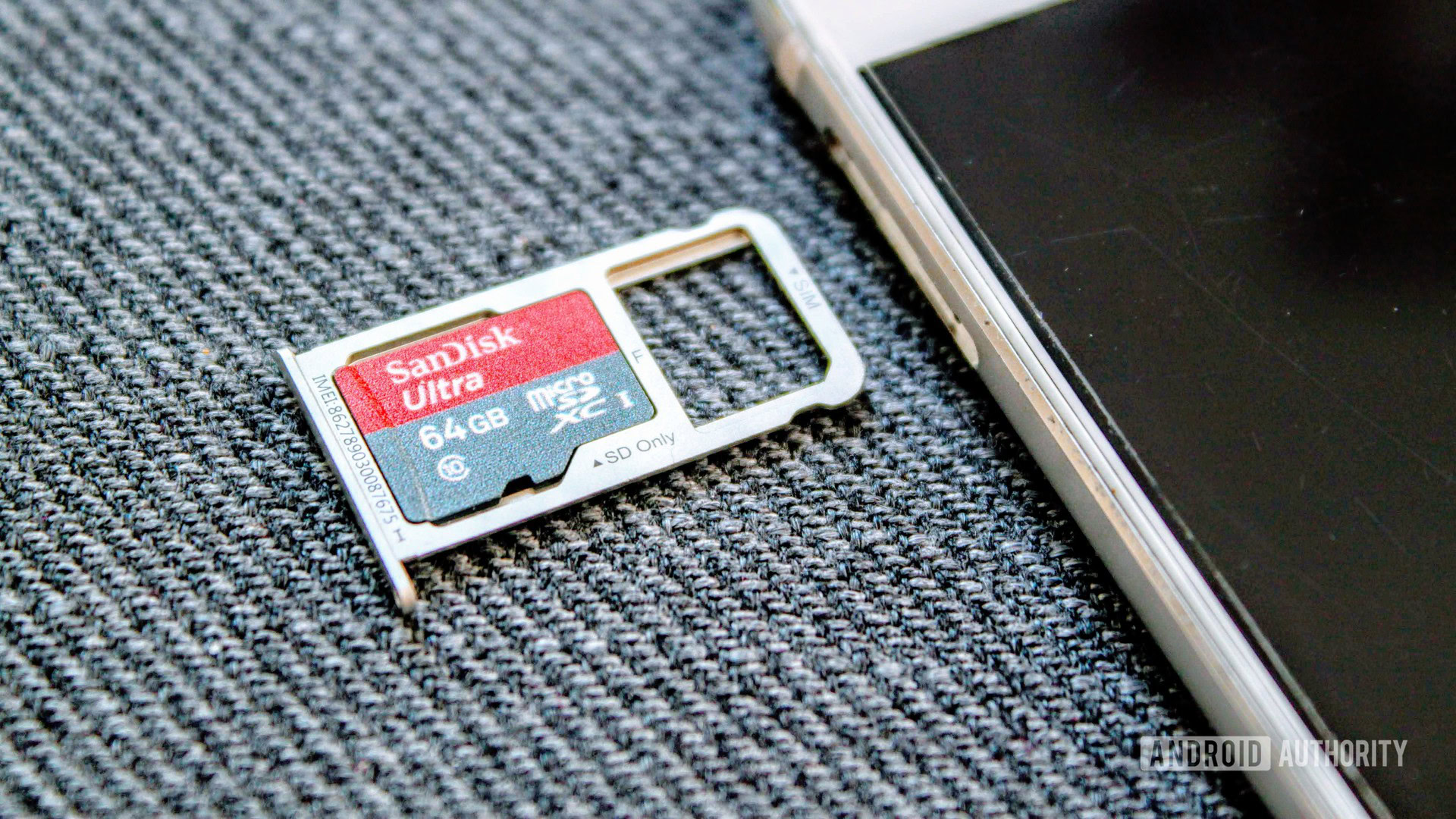Affiliate links on Android Authority may earn us a commission. Learn more.
What is Nano Memory and where is it headed?

Huawei launched Nano Memory in 2018, a proprietary memory solution of its own design. It was an intriguing prospect: a newer, smaller memory card for increasingly compact phones. Yet, it was hard to get excited about this format without the backing of major memory card developers and other OEMs. How many of us would ever have a chance to use these cards, anyway? Turns out, the answer’s not that many — Nano Memory cards have pretty much faded into obscurity in recent years alongside expandable storage as a whole.
What is Nano Memory?
Nano Memory is an expandable storage format developed by HUAWEI. It’s similar to microSD, though it’s smaller. These cards are the same size as a Nano SIM card (about 45 percent smaller than microSD). They fit into HUAWEI’s dual-Nano SIM card trays rather than a separate card slot.
HUAWEI has three of these cards available currently in 64GB, 128GB, and 256GB sizes, though the 64GB model is fairly hard to come by. They all feature 90MB/s read speeds and are based on the eMMC 4.5 flash storage protocol.
Read more: What is flash memory and how does it work?
What are the advantages of Nano Memory?
Nano Memory cards are functionally the same as microSD cards, so outside of size and speed, consumers will have the same experience with either. Device manufacturers, however, may see a larger benefit in using Nano Memory.
If OEMs ever adopt the tech, they could free-up space inside their smartphones for other components. That doesn’t just mean a smaller version of the (already small) microSD card slot, though; Nano Memory cards fit in HUAWEI’s dual-Nano SIM trays, removing the need for an extra memory slot entirely.

That may seem like a small advantage, but physical space is a commodity in phones, and microSD card support itself dictates decisions about a smartphone circuit board’s design and placement. Utilizing the SIM tray for expandable memory may give manufacturers more options in how they design their devices and the components they use.
All of that being said, microSD is already slight, and it doesn’t interfere with other physical aspects of the phone like how you hold it, or its IP rating. We also don’t yet know what advantages, if any, Nano Memory has offered HUAWEI in smartphone design.
Without a big incentive, manufacturers will be reluctant to adopt a patented technology from one of their major mobile competitors.
What are the disadvantages of Nano Memory?
Nano Memory is expensive for the comparative performance of a similar microSD card. At the time of writing, HUAWEI’s 128GB Nano Memory card costs around 49 euros (~$55) on Amazon and eBay. MicroSD cards can cost less than half that for the same memory and higher read speeds.
You also have far fewer options when it comes to the gigabytes of storage they offer, and their write speeds. MicroSD card storage goes up to 1TB, and there are numerous options with 90MB/s read speeds and above — some with more than double that.
If you invest in a Nano Memory card, you’ll only be able to use it on select HUAWEI phones.
However, possibly the biggest Nano Memory card disadvantage, which we’ll discuss further below, is support. It’s quite easy to find an Android phone that works with the microSD cards you may have picked up over the years, but if you invest in a Nano Memory card, you’ll only be able to use it on select HUAWEI phones.
Further, since these cards currently occupy a SIM tray slot, you’ll have to choose between using a second SIM card or expandable storage. That’s fine if you only use one SIM card, but it might be a bind for those who need two.
Which phones support Nano Memory?

So far, your only options for Nano Memory is to buy a HUAWEI phone, and your choices there are limited to the higher-end. Below is the list of supported devices:
Which OEMs support Nano Memory?

HUAWEI is currently the only company to support the Nano Memory format. HUAWEI’s Consumer Business Group CEO Richard Yu said HUAWEI was in talks with other companies to produce Nano Memory chips in the future — HUAWEI wants them to be the industry standard — but so far we haven’t seen any here in the west. Moreover, the US’ trade ban on HUAWEI likely further discouraged manufacturers from ever adopting the standard.
Back in 2019, I contacted memory card industry leader SanDisk about its potential to sell Nano Memory cards down the line and Ruben Dennenwaldt, the Senior Manager of Product Marketing at Western Digital, said:
We currently don’t have / support the Nano [Memory] Card standard from HUAWEI. While we obviously closely monitor the market, there are currently no plans to support this standard.
Until it’s supported on more phones, that market will grow at a snail’s pace. Today, Nano Memory is just an expensive expandable storage format only a handful of phones support. There’s no reason to buy a Nano Memory card unless a person requires one for a specific HUAWEI smartphone.
In the future, if it helps OEMs produce phones, Nano Memory might become much more commonplace. But progress in the last five months has been marginal. It’s only available on a handful of phones, and as long as it’s reserved for higher-tier devices, it may struggle to reach mainstream appeal.
Because, critically, this is not a high-end feature. Reducing the size of something that belongs inside the device — it’s hard to sell that to consumers. HUAWEI will have to convince OEMs of the technology’s potential first, and if its early progress is any indication, it’s going to struggle to do this.